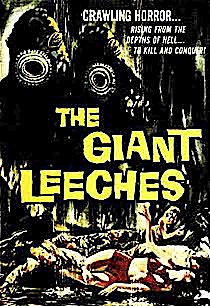Are we the top predators -- or the most successful parasites?
Scientists have discovered that parasites are
suprisingly important in food webs...Is this how we got to the top?

Food webs trace the flow of energy through an ecosystem. They extend the concept of food chains – those who-eats-whom sequences – to biological communities. Food webs rarely include parasites because of the difficulty in quantifying them by standard ecological methods. Parasites are small and invisible, hidden inside their hosts. However, parasites strongly affect food web structure and parasite links are necessary for measuring ecosystem stability, according to the study.
“Food web theory is the framework for modern ecology,” said Kevin Lafferty, a scientist with the USGS Western Ecological Research Center who is based at UC Santa Barbara and is lead author of the study.
“Parasites have been missing from this framework and, as a result, we know relatively little about the role of parasites in ecosystems. It’s like driving with a highway map, but with no knowledge of the smaller road network. To reach most destinations, you need a map with both.”
Using data from four relatively comprehensive food webs that contain parasites, Lafferty and his coauthors examined if and how parasites affected the food webs. They found that parasites dominated the food web links between species; on average, a food web contained more links between parasites and their hosts than between predators and their prey.
“Parasites may well be the thread that holds the structure of ecological communities together,” said study coauthor Andrew Dobson of Princeton University.
The researchers’ analyses revealed new patterns. It’s well known that vulnerability to predators decreases at the top of the food chain or highest trophic level. In this study, the scientists found that vulnerability of hosts to parasites also increased with trophic level. Consequently, animals at mid-trophic levels are the most vulnerable to natural enemies, being subjected both to diverse parasites and many predators.
“The work illustrates that ‘the pyramid of life’ we learn about in kindergarten is wrong!” said Dobson. “When you add parasites to food webs, the pyramid contains a second inverted pyramid of parasites that are as abundant as all the other species.”
Heavy stuff — and worth examining as part of the evolutionary process. It’s another layer of complexity; but, the dialectic of biology has never been shy of multiple factors.
Posted: Thu - July 20, 2006 at 06:35 AM